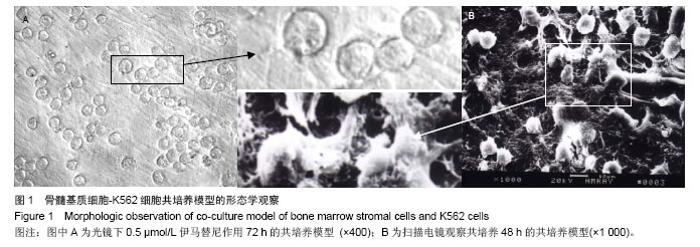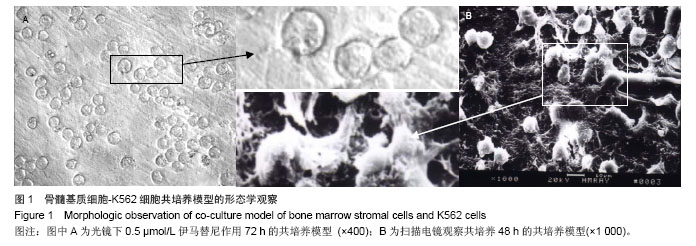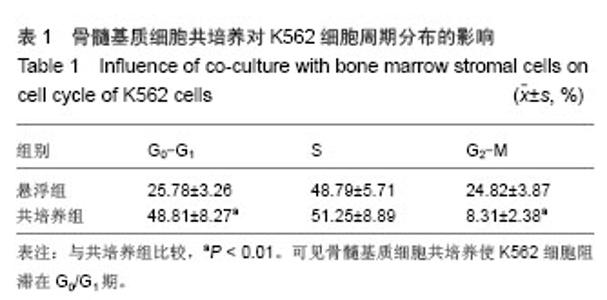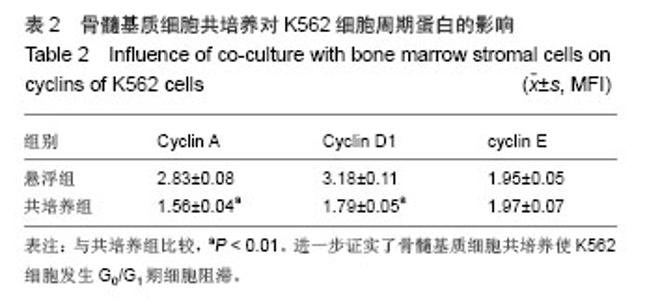| [1]Castangeth F.Palandri F. Amabile M,et al.Resuits of high-dose imatinib mesylate in intermediate Sokal risk chronic myeloid leukemia patients in early chronic phase:a phase 2 trial of the GIMEMA CML Working Party.Blood.2009;113(15):3428-3434.
[2]Lee F,Fandi A,Voi M.Overcoming kinase resistance in chronic myeloid leukemia.Int J Biochem Cell Biol.2008;40(3):334-343.
[3]Schraufstatter IU,Discipio RG,Khaldoyanidi S.Mesenchyreal stem cells and their microcnvironment.Fmnt Biosci. 2011; 16(12):2271-2288.
[4]NeⅣi B,fhirez P,Rettig MP,et al.Chemosensitization of acute myeloid leukernia(AML)following mobilization by the CXCR4 antagonist: AMD3100.Blood. 2009;113(24):6206-6214.
[5]Seke Etet PF, Vecchio L, Nwabo Kamdje AH. Signaling pathways in chronic myeloid leukemia and leukemic stem cell maintenance: key role of stromal microenvironment.Cell Signal. 2012;24(9):1883-1888.
[6]王吉刚,梁后杰,史曦凯,等.腺病毒介导CTLA4Ig基因在骨髓基质细胞中的表达[J].中华血液学杂志,2003,24(12):661-663.
[7]Weisberg E, Liu Q, Zhang X, et al. Selective Akt inhibitors synergize with tyrosine kinase inhibitors and effectively override stroma-associated cytoprotection of mutant FLT3-positive AML cells.PLoS One. 2013;8(2):e56473.
[8]Anderson K-C.Targeted therapy of multiple myeloma based upon tumor-microenvironmental interactions.Exp-Hematol. 2007;35(4 Suppl 1):155-162.
[9]Bhatia R, Munthe HA, Verfaillie CM. Role of abnormal integrin-cytoskeletal interactions in impaired beta1 integrin function in chronic myelogenous leukemia hematopoietic progenitors.Exp Hematol. 1999;27(9):1384-1496.
[10]Lundell BI,McCarthy JB,Kovach NL & Verfaillie CM. Activation-dependent alpha5beta1 integrin-mediated adhesion to fibronectin decreases proliferation of chronic myelogenous leukemia progenitors and K562 cells.Blood. 1996, 87(11): 2450−2458.
[11]Martín-Henao GA, Quiroga R, Sureda A, et al. L-selectin expression is low on CD34+ cells from patients with chronic myeloid leukemia and interferon-a up-regulates this expression. Haematologica. 2000;85(2):139-146.
[12]Ponte AL, Marais E, Gallay N, et al. The in vitro migration capacity of human bone marrow mesenchymal stem cells: comparison of chemokine and growth factor chemotactic activities. Stem Cells. 2007;25(7):1737-1745.
[13]Chu HC, Lee HY, Huang YS, et al. Erythroid differentiation is augmented in Reelin-deficient K562 cells and homozygous reeler mice. FEBS Lett. 2014;588(1):58-64.
[14]Lim S, Saw TY, Zhang M, et al. Targeting of the MNK-eIF4E axis in blast crisis chronic myeloid leukemia inhibits leukemia stem cell function. Proc Natl Acad Sci USA. 2013;110(25): E2298-2307.
[15]Manzotti G, Mariani SA, Corradini F, et al. Expression of p89(c-Mybex9b), an alternatively spliced form of c-Myb, is required for proliferation and survival of p210BCR/ABL- expressing cells. Blood Cancer J. 2012y; 2(5):e71.
[16]Vianello F,Villanova F,Tisato V,et al.Bone marrow mesenchymal stromal cells non-selectively protect chronic myeloid leukemia cells from imatinib-induced apoptosis via the CXCR4/CXCLl2 axis.Haematologica. 2010;95(7): 1081-1089.
[17]Konopleva M, Konoplev S, Hu W, et al. Stromal cells prevent apoptosis of AML cells by up-regulation of anti-apoptotic proteins. Leukemia. 2002;16(9):1713-1724.
[18]Nefedova Y,Landowski TH,Dalton WS. Bone marrow stromal-derived soluble factors and direct cell contact contribute to de novo drug resistance of myeloma cells by distinct mechanisms. Leukemia. 2003;17(6):1175-1182.
[19]Wang X, Wang C, Yan SK, et al. XIAP is upregulated in HL-60 cells cocultured with stromal cells by direct cell contact. Leuk Res. 2007;31(8):1125-1129.
[20]Kim CH, Wu W, Wysoczynski M, et al. Conditioning for hematopoietic transplantation activates the complement cascade and induces a proteolytic environment in bone marrow: a novel role for bioactive lipids and soluble C5b-C9 as homing factors. Leukemia. 2012;26(1):106-116. |





